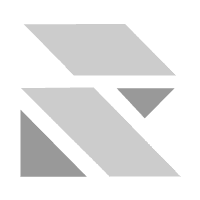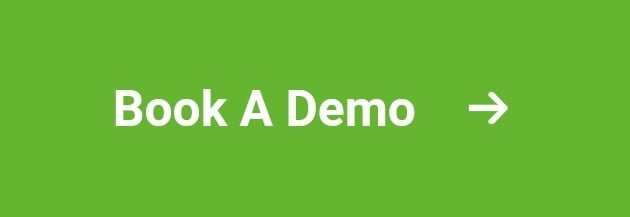
Top 15 Best Compliance Automation and Evidence Collection Software
Top 15 Best Compliance Automation and Evidence Collection Software
In today's dynamic regulatory landscape, organizations are under immense pressure to demonstrate adherence to a myriad of compliance frameworks—from industry-specific mandates like HIPAA and PCI DSS to broad data privacy regulations like GDPR and CCPA, and security standards like SOC 2 and ISO 27001. The manual process of collecting, organizing, and presenting evidence for audits is not only time-consuming and resource-intensive but also prone to human error and significant stress.
This is where compliance automation and evidence collection software become indispensable. These tools leverage technology to streamline compliance workflows, automate data gathering, and provide continuous monitoring, transforming what was once a reactive, burdensome task into a proactive, efficient, and integrated function. For businesses of all sizes, especially those scaling rapidly, investing in such solutions is no longer a luxury but a strategic necessity.
Here are 15 of the best compliance automation and evidence collection software platforms leading the market in 2025:
1. Risk Cognizance
Key Differentiators: Risk Cognizance stands out with its AI-powered automation and integrated GRC platform, offering a holistic approach to compliance and risk management. It's designed to not only automate evidence collection but also to intelligently connect risks, policies, and controls, providing comprehensive visibility and audit readiness. Its modular design allows for scalability, making it suitable for businesses evolving their compliance needs.
Relevant Features for Automation & Evidence Collection:
- Integrated Connected GRC Software: Unifies compliance, risk, audit, and vendor management, ensuring single-source-of-truth for all GRC data.
- Automated Evidence Collection: Direct integrations with cloud providers (AWS, Azure, GCP), identity platforms (Okta, Azure AD), HR systems, ticketing, and other tools automatically pull and organize relevant evidence (logs, configurations, user access, training records).
- Continuous Control Monitoring: Real-time monitoring of controls and alerts for deviations, ensuring proactive identification and remediation of issues.
- AI Policy Linker & Risk Syncer: Leverages AI to intelligently map internal policies to compliance requirements and correlate risks with controls.
- Streamlined Audit Management: Provides audit readiness dashboards, automated report generation, and a secure portal for auditor collaboration.
- Regulatory Compliance Management Software: Tracks and manages compliance against multiple frameworks, including HIPAA, SOC 2, ISO 27001, GDPR, PCI DSS, CMMC, and more.
- IT & Cyber Compliance Management Software: Specifically tailored for cybersecurity compliance, ensuring digital asset security meets necessary standards.
- Vendor Risk Management Software: Extends automated evidence collection and compliance monitoring to third-party vendors.

2. Vanta
Key Differentiators: Vanta is a popular choice for fast-growing companies seeking to achieve compliance certifications like SOC 2 and ISO 27001 quickly. It's known for its user-friendly interface and extensive integrations that automate security monitoring and evidence collection.
Key Features: Automated security checks, continuous monitoring, policy templates, integrations for evidence collection, automated risk assessments, audit management.
3. Drata
Key Differentiators: A strong competitor to Vanta, Drata also focuses on continuous compliance automation with robust integrations and an intuitive user experience. It's highly effective for managing various compliance frameworks simultaneously.
Key Features: Continuous control monitoring, automated evidence collection, pre-mapped controls for frameworks (SOC 2, ISO 27001, HIPAA), built-in training, real-time security reports.
4. Hyperproof
Key Differentiators: Hyperproof offers a versatile platform for managing compliance and risk programs, with a strong emphasis on automating evidence collection through its "Hypersyncs" and "LiveSync" features. It helps organizations streamline workflows and maintain continuous visibility.
Key Features: Automated proof collection, customizable frameworks, centralized compliance tracking, audit management, risk reporting, task management.
5. Secureframe
Key Differentiators: Secureframe provides an end-to-end compliance automation platform designed to accelerate certification timelines. It boasts a wide range of integrations and AI-powered features for risk assessment and policy management.
Key Features: Automated evidence collection, policy management, AI-driven risk assessments, continuous cloud monitoring, vendor due diligence, user access reviews.
6. Sprinto
Key Differentiators: Sprinto is a compliance automation platform that simplifies GRC with integrated security programs and continuous monitoring. It's often praised for its ease of use and seamless integrations.
Key Features: Automated security compliance, continuous monitoring, policy development, pre-built templates, integrations for evidence collection.
7. MetricStream
Key Differentiators: A long-standing leader in the GRC space, MetricStream offers a comprehensive suite of solutions for enterprise GRC, including robust capabilities for compliance automation and evidence collection, particularly for larger and more complex organizations.
Key Features: Automated compliance workflows, real-time dashboards, continuous monitoring of regulatory changes, policy management, risk management integration.
8. AuditBoard
Key Differentiators: AuditBoard provides a unified platform for audit, risk, and compliance management. It emphasizes workflow automation and real-time collaboration, making it easier for teams to gather evidence and manage audits efficiently.
Key Features: Automated workflows, centralized dashboard, integrated risk management, document management with audit trails, real-time reporting and analytics.
9. LogicGate
Key Differentiators: LogicGate's Risk Cloud platform is highly customizable, allowing organizations to tailor risk and compliance workflows to their specific needs. It's known for its flexibility in automating processes, including evidence gathering.
Key Features: Customizable workflows, automated risk assessments, incident tracking, audit management, policy enforcement, integration hub.
10. OneTrust
Key Differentiators: While widely known for privacy management, OneTrust also offers strong GRC and security assurance capabilities. It provides tools to automate and streamline compliance processes, including evidence collection for security certifications.
Key Features: GRC and security assurance, technology risk and compliance, third-party risk management, policy management, incident management.
11. Apptega
Key Differentiators: Apptega focuses on cybersecurity and compliance management, helping organizations build, manage, and report on their programs. It offers features like automated framework mapping and real-time compliance scoring.
Key Features: Centralized compliance management, automated framework mapping, real-time compliance scoring, task management, integration with existing tech stack for evidence.
12. ZenGRC (by RiskOptics)
Key Differentiators: ZenGRC is a cloud-based risk and compliance management solution that offers continuous monitoring and simplifies audits. It's recognized for its user-friendly interface and ability to centralize compliance efforts.
Key Features: Centralized control mapping, automated workflows, risk management, audit management, evidence collection, pre-built frameworks.
13. StandardFusion
Key Differentiators: StandardFusion provides a platform for gaining holistic visibility into GRC information. It's noted for its comprehensive features that streamline compliance, risk, and audit processes.
Key Features: Centralized GRC data, compliance tracking, risk management, vendor tracking, policy management, audit preparation.
14. LogicManager
Key Differentiators: LogicManager places a strong emphasis on Enterprise Risk Management (ERM), integrating compliance and audit functions. Its workflow capabilities and centralized risk tracking assist in automating evidence collection tied to risk mitigation.
Key Features: ERM, compliance management, workflow automation, centralized risk tracking, audit management, vendor risk management.
15. Tugboat Logic (now part of OneTrust)
Key Differentiators: While now integrated into OneTrust, Tugboat Logic was highly regarded for its compliance automation and audit readiness, particularly for SOC 2. Its previous strength lay in its guided workflows and automated evidence gathering.
Key Features (Historically): Guided workflows for SOC 2/ISO 27001, automated evidence collection, policy templates, audit management, risk assessments. (Note: These features are now part of the broader OneTrust GRC offering).
Choosing the Right Solution
When selecting a compliance automation and evidence collection software, consider:
- Integrations: Does it connect seamlessly with your existing tech stack to automate data collection?
- Framework Support: Does it support the specific compliance standards you need to achieve?
- Automation Depth: How much of the compliance workflow, especially evidence collection, is truly automated versus manual?
- Reporting & Dashboards: Does it provide clear, real-time insights and audit-ready reports?
- Scalability: Can the solution grow with your organization's evolving compliance needs?
- User Experience: Is it intuitive and easy for your team to use?
- Cost: Does it fit your budget, offering a strong ROI by reducing manual effort and audit costs?
By carefully evaluating these factors, organizations can select a platform that not only simplifies their compliance burden but also strengthens their overall security posture and operational efficiency.


